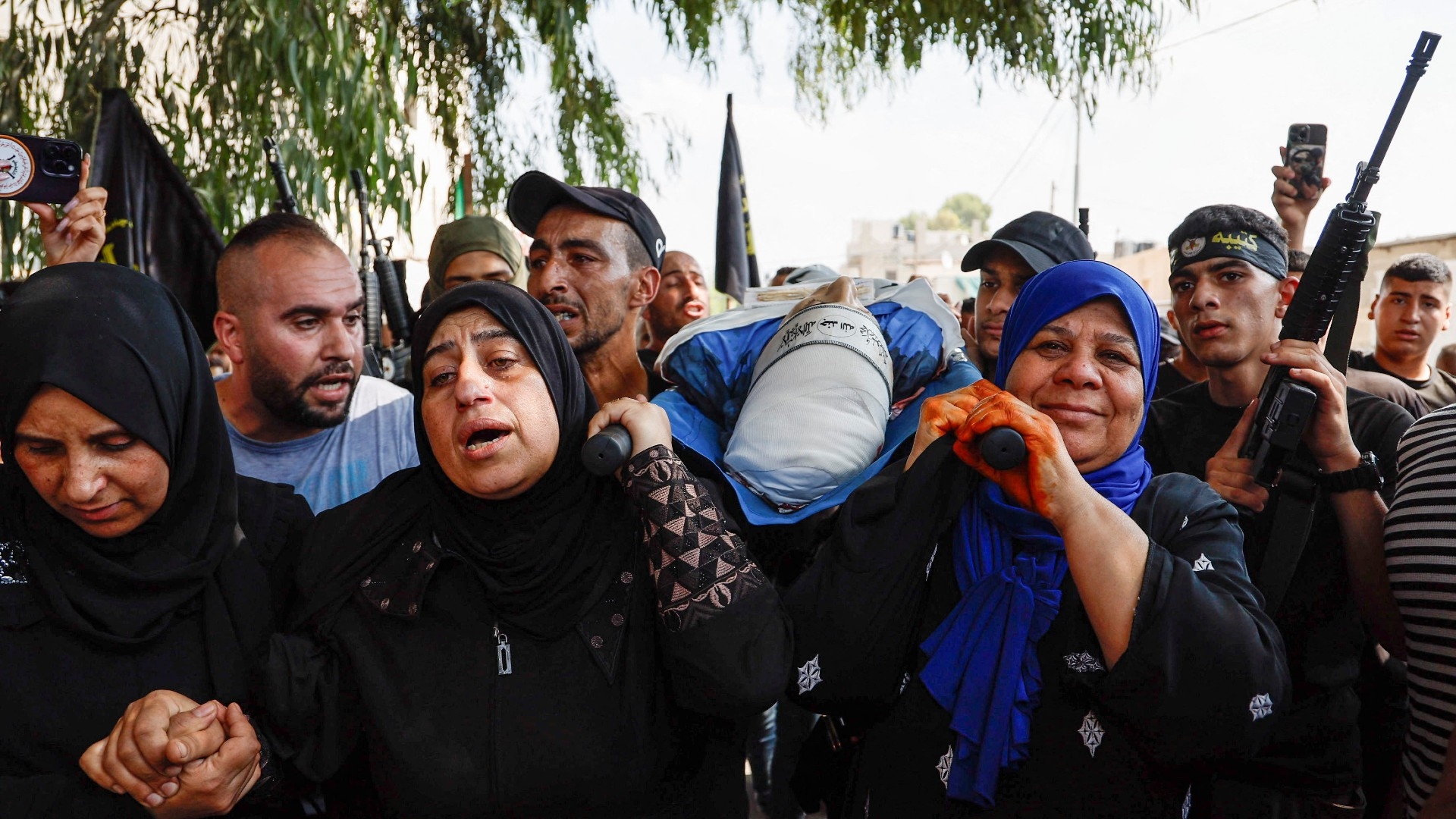Israel kills seven Palestinians as it tries to lock down the West Bank

Israeli forces have killed seven Palestinians over 24 hours in the occupied West Bank, as confrontations sparked by Hamas's attack on Israel grow.
Among those killed was a 13-year-old boy, and dozens more have been wounded across the West Bank.
As Israel battles with Palestinian fighters who seized control of Israeli communities beside the besieged Gaza Strip on Saturday, its military has forced shut much of the West Bank.
So far, some 600 Israelis are believed to have been killed by Palestinians who entered Israel from Gaza by land, sea and air.
As Israel has pounded the Gaza Strip with air strikes, entrances to towns, cities and villages, border crossings and military checkpoints in the West Bank have all been closed.
Stay informed with MEE's newsletters
Sign up to get the latest alerts, insights and analysis, starting with Turkey Unpacked
In response to the shutdown and the bombing of Gaza - 320 Palestinians are believed to have been killed to date - Palestinians announced a general strike in all areas of the West Bank, including schools, shops and public transportation.
Armed resistance groups have called for marches in all cities in support of the fighters in the Gaza Strip area.
In the West Bank, Palestinian health ministry spokesman Muhammad Hlayil told Middle East Eye that Israeli soldiers killed two Palestinian youths in the city of Ramallah and a 13-year-old child in the city of Qalqilya. Two other young men were killed in the city of Hebron and the town of Beit Ummar to the north, he said.
Soldiers also killed a young Palestinian man in Jericho, and a Palestinian fighter west of Nablus was shot dead during a firefight with Israeli forces.
More than 50 Palestinians have been wounded by live bullets, rubber bullets and teargas in various areas of the West Bank, injuries Hlayil described as minor to moderate.
Confrontations
Violent confrontations broke out between Palestinians and Israeli forces in the West Bank soon after images of Hamas's assault on Israel began circulating.
According to Sumaya Jawabra of the monitoring team at the Palestinian Information Center, clashes were seen in 96 locations across the West Bank over the past 24 hours.
In more than 37 of those, Israeli military positions and soldiers were shot at. There was one attempt to run over an Israeli, two stabbing attempts, two incidents where explosives were thrown and 19 times when a Molotov cocktail was lobbed.
"Five operations to torch military sites were recorded. There was one case of confronting settlers, two military vehicles were burnt and destroyed, and 13 marches were held in various cities," Jawabra told MEE.
In Nablus on Saturday evening, Palestinian Authority security services attacked a march that had been called by the Lions' Den, an armed resistance group.
Members of the security services fired tear gas at the marchers after they raised Hamas flags and chanted slogans celebrating the commander of Hamas's armed wing, Mohammad al-Deif.
Nablus-based journalist Ibtihal Mansour told MEE the crackdown took place on the al-Shuhada roundabout in the city centre, and live and rubber bullets were fired extensively.
The PA security services also deployed military vehicles to prevent gatherings and impede the marches from reaching Israeli soldiers.
Calls for marches in support of the fighters in Gaza are continuing.
Middle East Eye delivers independent and unrivalled coverage and analysis of the Middle East, North Africa and beyond. To learn more about republishing this content and the associated fees, please fill out this form. More about MEE can be found here.





